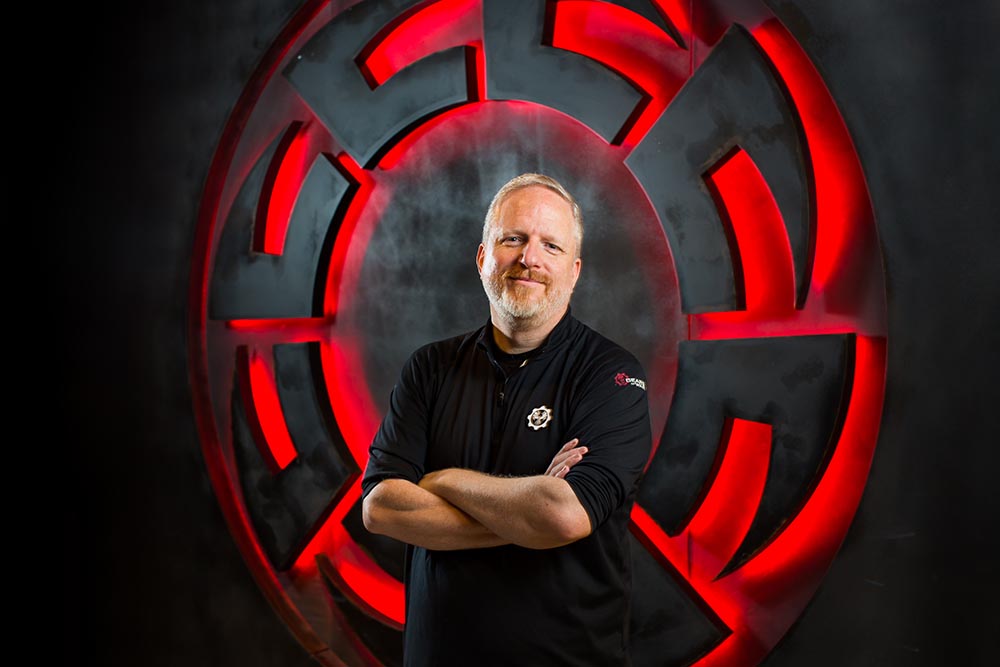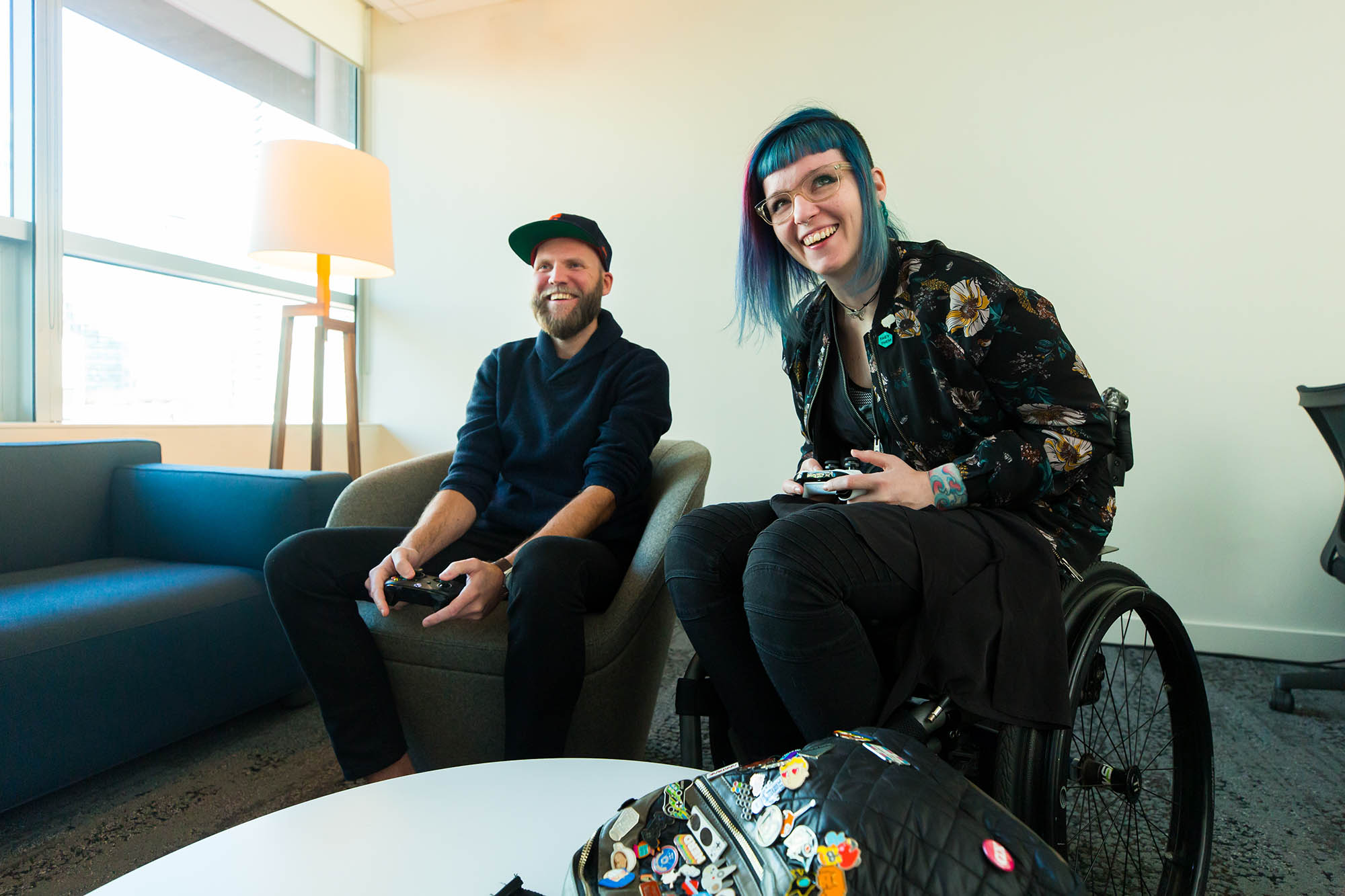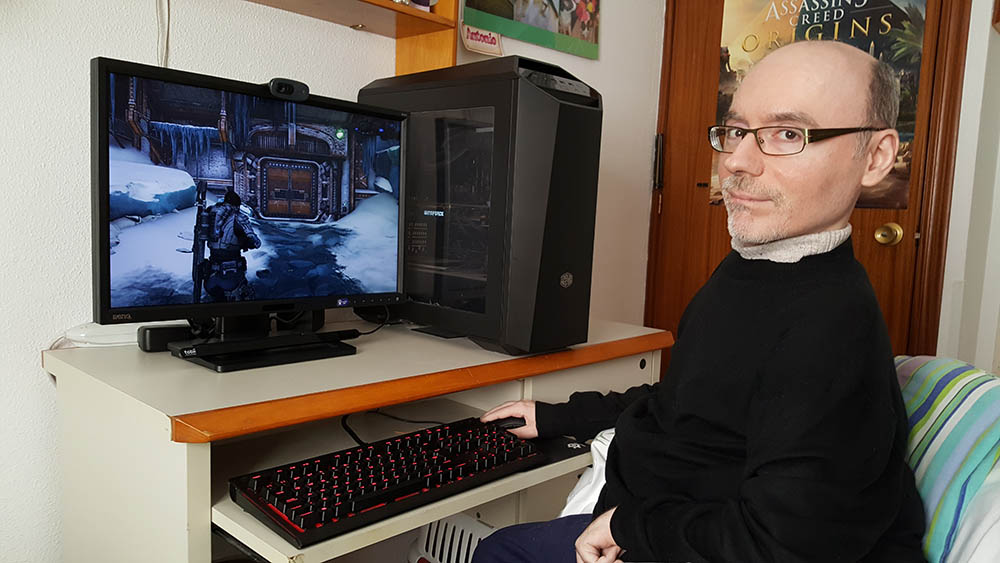Video games have saved Cherry Thompson’s life many times, from ‘80s game Rainbow Islands providing escape from a difficult childhood to Pokémon Red giving solace when Thompson was a homeless teenager. Games were about community, therapy, adventure and passion.
But more than six years ago, Thompson had a stroke at age 31 that led to vestibular and cognitive disabilities and a diagnosis of Ehlers-Danlos syndrome, a connective tissue disorder that weakens joints, skin, blood vessels and muscles. Thompson, who uses they/them/their pronouns, wanted to play games to cope with pain and surgeries, but found many games impossible to play without suffering severe migraines, motion sickness, hand pain and other barriers.
“I really, really struggled,” says Thompson, who’s also autistic with co-occuring dyslexia and attention deficit hyperactivity disorder, which affect how they process information and play games. “But as I slowly came to terms with my disabilities, it was revolutionary, because I realized the problem was with the games, and not with me.”
Now a well-known game accessibility specialist and developer in Vancouver, Canada, Thompson recently got a chance to try out Gears 5 — a game with a long list of accessibility features that mean more people can play it. With a stronger focus on inclusivity than ever before, The Coalition studio developed the third-person shooter and latest installment in the Gears of War series, released in September by Xbox Game Studios. The game has since been widely lauded for its thoughtful accessibility.
Unlike with Gears of War 4, Thompson can actually play Gears 5, thanks to a new option to turn off “camera shake,” or quick camera movements that trigger their vertigo, nausea and headaches. They can customize an on-screen display of information to minimize distractions and sensory overload while playing. And even though their hearing is fine, improved subtitles in an adjustable text size helps them process information.
“I’m excited to play the game more,” Thompson says, still holding the controller on a recent Friday after killing a few monsters. “The accessibility really shows a commitment from the game developers that they care about their audience and they understand their players include different types of people with different types of experiences.”

Rod Fergusson, studio head of The Coalition, photographed in front of the game studio’s logo in Vancouver, Canada, on Nov. 22, 2019. (Photo by Dan DeLong)
The Coalition, also based in Vancouver, had wanted to make Gears 5 as approachable and accessible as possible while still appealing to its experienced fanbase.
“We have a very hardcore franchise with a lot of fans with Gears tattoos,” says Coalition studio head Rod Fergusson. “How do you grow a franchise like that and welcome new players? How do you remove barriers and help them enjoy the experience? One of the ways was through inclusive design and the principle of ‘solve for one and expand to many.’”
Early in development, the studio hosted a two-day inclusive design sprint in 2017, bringing in Thompson and other people with disabilities who discussed their challenges, work-arounds and passions in gaming. It was at the sprint where many Gears 5 accessibility ideas first took root, including the message that the series’ subtitles needed improvement to better serve gamers who are deaf or hard of hearing.
“There were a lot of light bulbs that went off in our team,” says Otto Ottosson, lead multiplayer producer and accessibility lead for Gears 5. He was the one who brought team members to a Microsoft gaming and accessibility boot camp, where they worked with the Gaming for Everyone team and met more gamers with disabilities.
“The players were explaining why they love games, and it was all the same reasons why I love games, except they were limited from playing,” Ottosson says. “That really affected me. I remember coming away thinking, ‘This is not good enough. We need to do better.’ It was definitely the launching point for us to understand and be inspired to make accessibility something we took seriously.”
In the past, game developers sometimes saw accessibility features as serving only a niche audience, says Fergusson. Good subtitles, for example, take more work, time and resources, but also appeal to many people beyond those with hearing disabilities. They include parents who want to play on silent while their baby sleeps nearby, or players who game in a public space like an airport.
For Chris Robinson, a Chicago gamer who was born deaf, the subtitles in Gears 5 are an enormous improvement over those in many other games. A gamer since early childhood, Robinson has encountered plenty of barriers: no subtitles, tiny text or even other gamers kicking him off a team because he uses American Sign Language and not a microphone to communicate.
After watching a cutscene with no captioning a few years ago, he started DeafGamersTV, a streaming channel on Twitch, to manage his depression and advocate for more inclusivity in games. “I felt like I couldn’t just be angry at the screen; I needed to do something,” he says.
He now enjoys the fact that subtitles in Gears 5 include the name of speaker, whether or not a character is speaking on the radio, emotional context, key sound effects and backplate for contrast. He appreciates being able to increase the text size and that the subtitles tell him when the music gets louder with action and quiet after a battle.
“I really love how they’re trying to ‘equalize’ the action with sound and visuals,” says Robinson, who wears a tactile audio system — a vibrating vest — that helps him “feel” the action while playing. “If there’s something they want you to hear, you are aware and you can see and feel it.”
Accessible features in Gears 5 have also helped Antonio Martínez, a gamer, game reviewer and accessibility advocate in Spain who has spinal muscular atrophy. Diagnosed with the progressive, muscle-weakening disease at 3, he started using a wheelchair at 15, developed scoliosis and has limited mobility in both his hands. Gaming can be painful and tiring, but he loves it for connecting with friends and immersing himself in stories that make him feel like he can climb mountains, jump between rooftops and feel free.
When Gears 5 first came out, aiming a gun required holding down a button, which was difficult for Martínez. “I could only play for like 30 minutes until I was exhausted,” he says.
But after the disability community highlighted the game’s lack of aim toggle on social media, Ottosson quickly asked an engineer to build the feature. It appeared in the game a few weeks later, enabling Martínez to play for three hours with his friend, who has low vision.
“It makes us so happy to be enjoying a game together,” he says. “I can help with what he can’t see, and he can help shoot guys I can’t take down. Our disability is always a part of our identity, but it wasn’t a barrier in that moment.”
Martínez was also glad to be able to remap his keyboard to accommodate his limited mobility and turn off camera shake to prevent motion sickness.
“I understand it is an investment for companies to do accessibility, but if you could hear my friend’s voice when he’s playing, it’s amazing,” he says. “You wouldn’t believe how happy he is. When a game doesn’t have accessibility options, you can feel it in our voice, you can feel our hearts sinking because the game is telling us, ‘You can’t do that. Not because you are not able, but because I am not letting you.’”
Other Gears 5 accessibility features include full controller remapping, full Xbox Adaptive Controller support, single stick movement, turning off controller vibration, holding down a button instead of quickly tapping it, and support for people who are colorblind. For game approachability for new players, The Coalition also developed Jack, a playable, flying support robot, and a combat training mode called Bootcamp. And it has five other modes of play for all levels of players.
The hard work and features contributed to a successful debut, with Gears 5 attracting more than 3 million players in its launch week, making it the most played Xbox Game Studios title in its first week since Halo 4 in 2012. Gears 5 also became the first AAA game to receive a perfect score in a Deaf and hard of hearing review on game accessibility resource site Can I Play That? The site had also pointed out the lack of aim toggle; after Gears 5 added the feature, the site’s mobility review bumped up its score to 9.9 (out of 10).
Fergusson hopes and expects the accessibility work in Gears 5 will set the standard for future Xbox Game Studios titles — and eventually, the industry.
“Just as we looked at games that came before us and said we can do better, I want games that come after us to go, ‘What Gears 5 did is the baseline for what to do, and let’s see if we can do more,’” he says. “I hope people put more thought and attention and care into accessibility features because it allows people to enjoy their creations.”
For SightlessKombat — a U.K. gamer, streamer and game accessibility consultant who was born completely blind — Gears 5’s accessibility doesn’t just help him score points but makes him feel like he’s part of a big community. When he first played console games in the ‘90s, few games were accessible, but he played anyway.
With Gears 5, he’s thrilled to use the Narrator feature that reads menus and other text out loud, in contrast to Gears of War 4, where he had to remember the location of menu options and number of button presses right or left to get there.
He’s learned to identify different monsters and their weapons by their sounds, regardless if it’s a flying foe or robot with a rocket launcher. For enemies far away, he can line up their location with a stereo headset or surround-sound rig, and shoot with a sniper rifle to get extra damage. But he’s also happy for an accessibility feature called Target Lock, which auto-aims the reticle, or crosshairs, while you’re aiming down sights.
“Target Lock allowed me to take down the largest enemies in the game,” says Sightless, who prefers to go by his gaming name. “’I’ve been able to get four back-to-back sniper rifle kills. It was one of those moments where I was like, ‘Oh, my word!’”
He also uses a feature called Fabricator Ping, in which the Fabricator — a box players must find to buy weapons and defenses — emits a ping that increases in volume and frequency as you approach. He had suggested the navigation tool to the Coalition while playing Gears of War 4. To his surprise, the developers added it to the game and name-dropped him in the patch notes. “That really threw me for a loop,” he says.
“If Gears 5 didn’t have narrated menus, if Target Lock wasn’t there, if Fab Ping hadn’t returned, I might not be playing the game,” he says. “There would be a definite sense of missing out on a cultural phenomenon.”
Lead image: Cherry Thompson (right), game accessibility specialist and developer, plays Gears 5 with Otto Ottosson, lead multiplayer producer and accessibility lead for Gears 5 at The Coalition in Vancouver, Canada, on Nov. 22, 2019. (Photo by Dan DeLong)
This story was originally published on Dec. 9, 2019.







